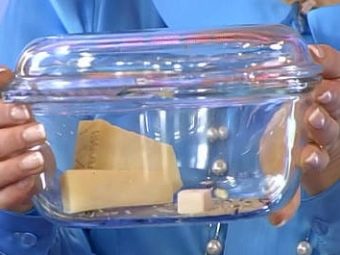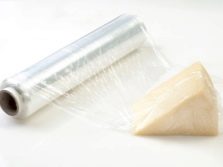How to store cheese?

Any product needs proper storage conditions. Dairy products are no exception.As for cheeses, today they are represented in a wide variety, so it is important to have an idea about the technology of storage of these natural and mouth-watering products.
General rules for storage at home
Now it is difficult to meet people who do not know what cheese is. Once having tried it, it is impossible to remain indifferent to the unique and savory taste of the product. The current selection of cheeses surprises with its variety. This gives an excellent opportunity for every gourmet to choose a product that meets personal preferences regarding organoleptic characteristics, appearance and price category. Besides the fact that cheese is a separate food product, it is also included in the composition of many dishes, cold appetizers and even hot soups.
Due to the popularity of cheeses, the freshness and naturalness of the products sold becomes an important issue. This leads to the need for a clear understanding of the principles of proper storage of cheese after purchase, allowing longer to keep a unique chemical composition, rich in beneficial components for the body, bringing maximum benefit in the course of use.
Given the specificity of manufacturing, nutritionists confidently call it a "living" product. That is why it is important to ensure proper storage conditions for cheese products after the purchase or self-preparation. The task of each hostess is to understand all the nuances of its preservation, otherwise the product stored in inappropriate conditions, very quickly deteriorate. This will affect its taste, since irreversible processes will occur in its chemical composition. As a result, the product will lose its visual appeal - a patina will form on it, the texture will change, and the use of such cheese can cause serious harm to a person.
Since cheese is a natural product, its storage time is short. But errors related to the storage conditions after purchase can reduce it further. The most common mistake associated with storage conditions is the inappropriate temperature or its sharp fluctuations that adversely affect dairy products. It should be noted that too low a thermometer will cause the death of important microorganisms that make up the product. In addition, low temperatures contribute to a change in its consistency. High temperatures will cause reproduction and development of harmful microorganisms, which can cause serious harm to health.
A significant role in the process of ensuring proper storage conditions is played by the level of humidity. Its high indicators contribute to the deterioration of the product, too dry air will dry it, and not only the top layer will wither, but its full drying will occur.
Creating good conditions for the storage of cheese is not so difficult, however, its varietal affiliation plays an important role. The grade and type of product have special requirements regarding preservation, and therefore may vary over a wide range. Solid and semi-solid varieties stand out among the entire range of having the longest shelf life. The optimum temperature condition recommended for similar products is on the border from 0 to -4 degrees. As for the packaging, French products are usually wrapped in food grade polyethylene, and Swiss cheeses are perfectly preserved in enamel or glassware. To prolong the freshness of the cheese head, sugar is placed in the container, which will eliminate the excess moisture inside.
If you want to keep the cheese without a refrigerator, a rather simple method will help - the product is wrapped in a cloth dipped in saline solution, after which the cheese can be removed in a cool place and the sunlight can be restricted to the product. This option will save freshness, which means that it will be usable.
Moldy cheeses need the right air temperature. It has been established that such products retain their freshness throughout the month while ensuring temperature conditions not exceeding 0 degrees. As for the mark, which is at the level of +10 degrees, in such conditions they can be kept for no more than one week. If you want to create the right microclimate for storing Camembert, the presence of vacuum packaging is mandatory.
Even a small piece of this product has a rather specific aroma, so storing it in the refrigerator without additional shelter or container will cause the smell to spread everywhere. And the refrigerator will not get rid of the smell of the missing piece even after removing the source.
Cheese, cooked independently, has a minimum period for use, as a rule, it is only a couple of days, as is the case with cottage cheese. If such a dairy product is purchased in a supermarket or on the market, you should know that the plastic packaging in which it is sold in order to store it in the refrigerator will not work. Homemade cheese should be shifted to a glass container and cover. In a wooden container, cottage cheese can even be frozen, without prejudice to the chemical composition. As practice shows, during freezing, it does not lose its beneficial and taste properties, so it can be stored in the freezer for a month.
Pickled cheese is stored for the longest time in its whey. Before serving the product, it is soaked in milk or in plain water to remove the salt. Properly cooked cheese can be stored for a very long time, but suluguni cannot remain fresh for so long, so this variety should be eaten as soon as possible so that it does not mold after the depressurization (opening) of the factory packaging.
Having considered in detail the storage characteristics of commercially available varieties of cheese, it is necessary to dwell on the main points relating to storage in more detail.
Temperature conditions
Since modern city apartments do not have a separate cellar with optimal air temperature, the only place to store food is a refrigerator. For cheese, the recommended air temperature is considered to be 6-8 degrees Celsius with a humidity of 90%. Such a microclimate will be ideal for dairy products. Temperature fluctuations adversely affect the freshness and safety of cheese, therefore, to avoid the occurrence of drops, it is necessary to take place under the product on the lowest shelf of the cooling device. But from putting cheese on the door should be abandoned, because this particular area is most affected by temperature fluctuations.
Separate retractable containers designed for fruits and vegetables will also become a suitable place for a dairy product, just need to choose the right packaging for its storage.
Packaging
For those who are seriously concerned about the issue of extending the freshness of cheese, it is worth knowing that the product must have an individual packaging. This rule applies to different types of cheeses, as well as a single piece or separately cut pieces. Packages that have become commonplace are not suitable for keeping cheese, because they interfere with air circulation. And this fact adversely affects the taste properties of any food, and cheese is no exception. In addition, such an environment becomes favorable for the reproduction of various microorganisms.
The paper provokes premature stagnation of cheese. Acquisition and use of parchment paper, which is available in almost every kitchen, will be an excellent alternative. Most cooks agree that it is best to store the product in foil. Selecting the package, you should take care that the product could "breathe" in it.When the choice is limited in one way or another, it is worth making a few holes in the existing package that will provide the necessary ventilation.
A simple option, for example, on the road or in the summer at the cottage, will be the use of food-grade plastic containers, which are sometimes included in the standard refrigerator package and are sold in a large assortment in any business department. In extreme cases, a regular plate covered with a plastic lid can help out.
Term
An important point is a clear understanding of how much time you can store cheese without compromising the freshness. Solutions to this issue depend on the variety of products. For solid species, shelf life in the refrigerator is one, a maximum of one and a half weeks; soft species will be fresh for no more than three days, since they have rather accelerated periods of ripening and aging.
Fused dairy product is not worth it after two days of storage. After the specified time, it loses its organoleptic characteristics.
How to avoid cheese spoilage at room temperature?
It should be understood that the conditions of the product without a refrigerator suggest a minimum period of freshness and fitness for use.
There are a number of effective recommendations that will allow him to extend freshness even at room temperature.
- In the course of selecting a place for placement, preference should be given to darker and drier zones.
- Stopping at storage without a refrigerator, a kind of “packaging” for cheese, consisting of a napkin or cloth soaked in saline, will be an effective option. Its main advantage will be the prevention of early drying of a natural product.
- Do not eat cheese after a week of storage at room temperature.
- Having a choice, it is necessary to give preference to a wooden surface for placement.
Useful recommendations
Perennial active use of cheese, the variety of its varieties, the benefits for the body have allowed us to work out empirically effective ways to preserve the freshness of a store-bought or self-made dairy product.
It is recommended to remember some tips from fresh cheese lovers.
- Sending a product for storage, it will be more correct to refrain from cutting the crust from a piece or a solid head. The integrity of the cheese will keep its flavor. It is worth refusing to cut the product for the future - early cutting of the product will lead to its drying. Cutting should be carried out immediately before use and in quantities that are enough for one time.
- You should not buy cheese in kilograms, because it is unlikely to eat it before the expiration date. The exception is the purchase of a product for any celebration or for a large family. It would be more expedient to visit the supermarket once again and purchase fresh cheese.
- It is not always possible to eliminate the drying of the product, but there are options for correcting the situation. In this case, it will be useful to soak the head in milk.
- A clear sign that the product has already deteriorated will be whitish or pinkish spots on its surface. For the most part, expired cheese will be sticky, and mucus may accumulate on it. Varieties that initially do not have individual varietal odors will signal the owners to dispose of their unpleasant odor.
- When planning to use products, you should take it out in advance from the refrigerator so that the organoleptic qualities are preserved at the most natural level. As a rule, the product will be sufficiently short stay at room temperature after a long stay in the refrigerator.
It is noted that the product stored in one whole piece, will retain its freshness much longer.It is necessary to avoid the joint storage of different varieties of the product, so as not to mix flavors, and also adhere to the recommendations for the storage of each individual type of product.
How to store cheese, see the next video.


































